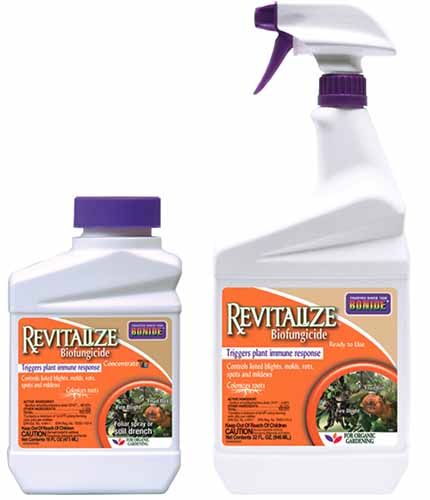Spots may be cute on a puppy. But on a Japanese maple? Not so much.
Not only do spots on the foliage make your Japanese maple look shabby, but it’s your tree’s way of telling you there’s trouble afoot.
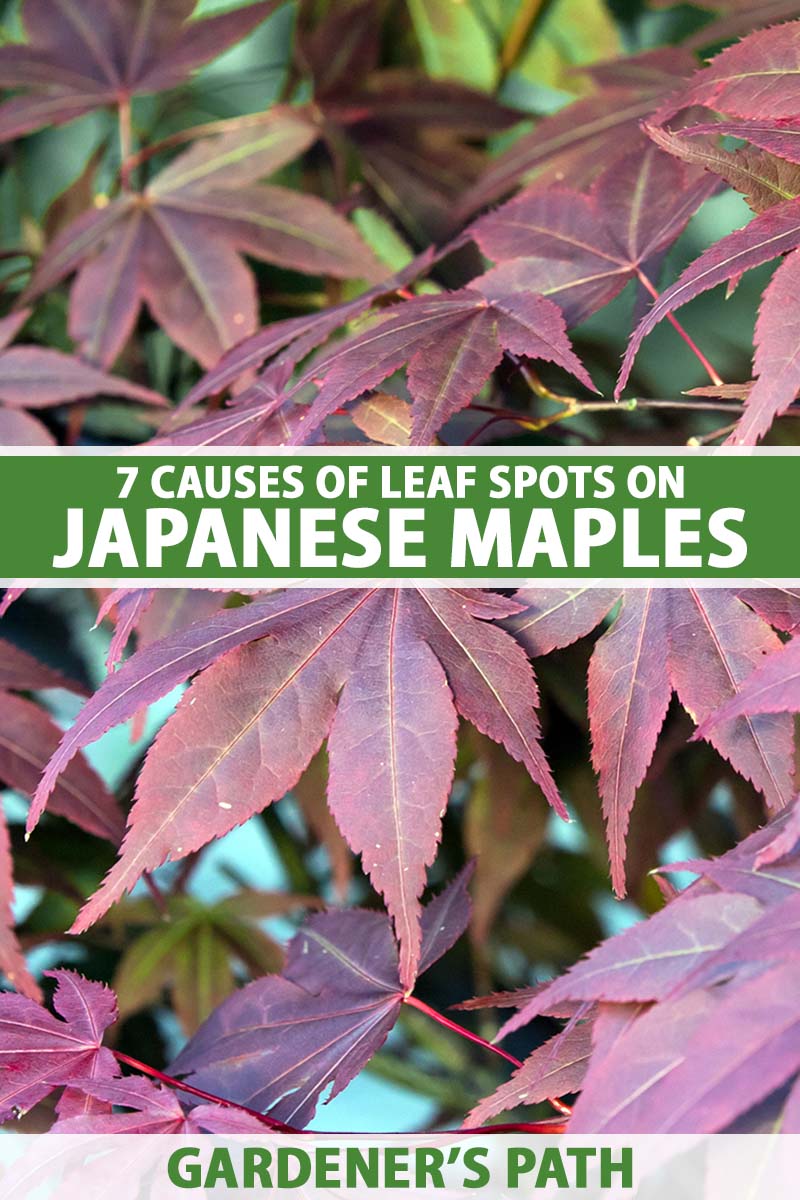
We link to vendors to help you find relevant products. If you buy from one of our links, we may earn a commission.
While Japanese maples aren’t particularly weak or susceptible to disease, they are often small in stature.
That matters because a fungal infection that causes some defoliation on a massive tree will likely have less of an impact overall than it will for a small specimen that doesn’t have as many leaves to lose.
So, let’s talk about the diseases that cause these spots and when they might become something to worry about. Here’s a quick preview of everything we’ll go over:
7 Leaf Spot Diseases in Japanese Maples
Make sure you’re familiar with the ins and outs of raising Japanese maples before we start our journey here. A lot of diseases can be avoided with proper care.
Make looking over your Japanese maples a regular part of your routine – it’s much easier to resolve an issue when you catch it early on rather than waiting for it to get out of hand.
No matter the cause, your trees will be far less likely to experience disease problems if you rake up fallen leaves in the autumn and water at the soil level rather than on the leaves.
Let’s look at the ailments that may cause spotting on Japanese maple leaves.
1. Alternaria Leaf Spot
Fungi in the Alternaria genus cause dark brown to black spots on the foliage. These spots may or may not have yellow halos.
If the leaves are heavily infected, they will drop from the tree. In bad infections, a young or small Japanese maple can be completely defoliated.
Since the pathogens that cause this disease thrive in cool, wet weather, it’s no surprise they’re most active during the spring and taper off a bit during the summer.
When temperatures are right between 70 and 82°F, the fungi are most active, but they can grow outside of these temperatures as well.
Silver (Acer saccharinum) and sugar maples (A. saccharum) are more susceptible, but if you notice the symptoms on a nearby maple of another type, be aware that it could also be coming for your Japanese maples – especially those that are stressed.
Treating Alternaria leaf spot is identical to the process you would use to treat anthracnose, which we’ll talk about next.
2. Anthracnose
Anthracnose occurs in hundreds of species, including varieties of Acer. Symptoms can range from a few angular spots to complete defoliation.
The irregular spots are tan to black, and typically appear along the veins and margins of the leaf.
The spots might spread and merge, eventually resulting in leaf drop. When the problem is bad enough, it can completely defoliate a Japanese maple tree.
If this happens in the spring, the tree will typically develop new leaves and will recover. Trees that are infected during the fall won’t develop new leaves until the following spring.
There are many pathogens that cause anthracnose in Japanese maples, but the most common are Aureobasidium apocryptum (syn. Kabatiella apocrypta), Colletotrichum gloeosporioides, and Discula campestris.
These are all spread by water, so they’re typically most active in the spring and fall, and activity might stop altogether in the summer.
Do what you can to avoid splashing water on the leaves of your tree.
We can’t control the weather, but we can control irrigation, and sprinklers provide a quick way to spread this disease throughout the garden.
If your Japanese maples have anthracnose, treatment begins in the spring.
At leaf bud break, spray trees with a product that contains both mancozeb and copper, or one like Bonide’s Revitalize, which contains the beneficial bacteria Bacillus amyloliquefaciens strain D747.
Bonide Revitalize Biofungicide
This product is available in both 16-ounce concentrate and 32-ounce ready-to-use containers at Arbico Organics.
Reapply throughout the spring following the manufacturer’s application timing guidelines. You can also reapply again in the fall.
3. Bacterial Leaf Spot
If you grow fruit trees, lilacs, forsythia, or dogwoods, you might already be familiar with this disease.
It’s a bacterial infection that enters through wounds on the plant, whether caused by insects, pruning, or wind damage, and it causes small black spots to appear on the leaves.
Leaf veins also turn black, and in particularly bad cases, it can cause new shoots and branch tips to turn black and shrivel up.
This disease is caused by the bacteria Pseudomonas syringae pv. syringae and Japanese maples are unfortunately extremely susceptible.
Even more unfortunate, it’s difficult to control. While you can spray your plants with a copper fungicide, the bacteria can become resistant.
The best defense is a good offense. Avoid pruning during wet weather, keep the area around your Japanese maple clear to improve air circulation, and remove any symptomatic plant tissue. Also, be careful not to over-fertilize your plant.
If the pathogen attacks your tree, spray with copper once a month but not more often than that.
Better yet, alternate copper with a bactericide that contains Bacillus subtilis. This beneficial bacteria can control and eradicate the pathogen that causes this disease.
Use copper one month and your B. subtilis product the next. Stop as soon as new growth looks healthy.
B. subtilis products can be hard to find, so head to Arbico Organics to grab a gallon or two-and-a-half gallons of Cease, which contains this powerful ingredient.
4. Phyllosticta
This disease appears as round yellow or tan spots on the leaves. On other Acer species, the spots might also have a purple border.
If you look closely, the centers might be so thin as to be transparent, and these might fall out, leaving small holes throughout the foliage.
Phyllosticta spot is caused by the fungus Phyllosticta minima. This pathogen requires water to reproduce, and it can travel on wind and water. It can also live on fallen leaves throughout the winter and reinfect your plant if you don’t clean up the debris.
This disease should be filed under NBD, for no big deal. The symptoms are kind of ugly, but it won’t kill or even really harm your tree. It just makes it look a bit shabby.
Of course, we want our Japanese maples to look as good as they can, so to eliminate this disease, your first task is to rake up all the leaves around your tree as soon as you spot signs of a problem, and do it again in the fall to prevent any fungi from overwintering.
Then, spray the tree with copper fungicide. You might also want to spray the tree in the spring after the leaves have emerged and matured.
You can purchase copper dust in one-pound or four-pound containers at Arbico Organics. Mix it with water according to package directions and spray your trees.
5. Powdery Mildew
The fungi that cause powdery mildew in maples, Phyllactinia marissallii, like the same conditions that Japanese maples do – so it’s no wonder they go hand in hand!
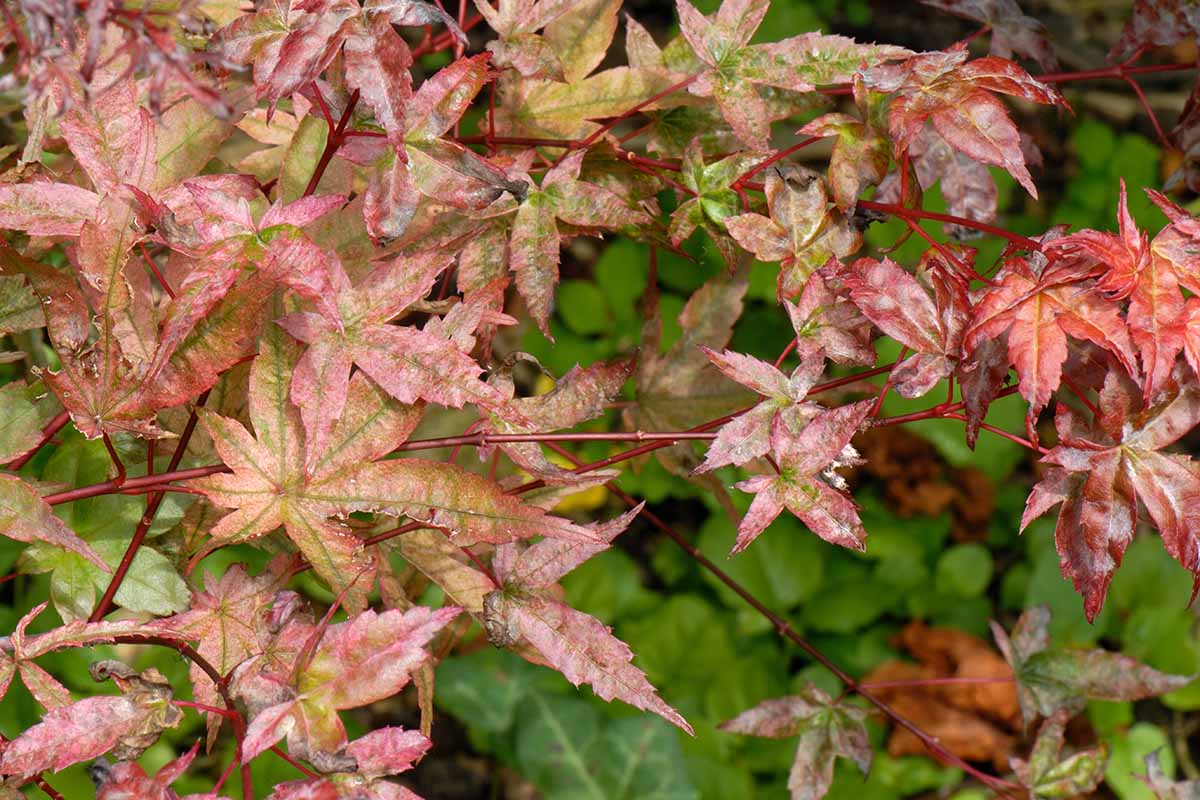
Because this disease is fairly common, you want to provide preventive care through proper cultivation.
Start by making sure your tree stays healthy enough that it can withstand the pathogen, or that it won’t become highly symptomatic if it is infected.
Do this by planting your tree with the proper light exposure, feeding it regularly as needed, and giving it the appropriate amount of water.
Keep the Japanese maple pruned, water at the soil level, and check on your tree regularly to see if any symptoms are developing. Treating powdery mildew early on is a lot easier than waiting until the problem is severe.
P. marissallii only attacks plants in the Acer genus, and other fungi that cause powdery mildew in other species won’t attack types of Acer.
So you don’t have to panic if your pumpkins have powdery mildew. It doesn’t mean your Japanese maples will also contract the disease, though it does indicate that the conditions are right.
Japanese maples rarely get seriously sick with this ailment, but if you start to see a powder-like coating on the leaves in spots or patches and maybe some foliage turning yellow, it’s time to act.
Neem oil, copper fungicide, or a product that contains the beneficial bacteria Bacillus subtilis, such as Cease, are all effective at treating powdery mildew.
Whichever you choose to use, follow the manufacturer’s directions for application.
6. Septoria
We still call this disease septoria leaf spot though it’s caused by the reclassified pathogen Sphaerulina aceris, formerly known as Septoria aceris.
This disease causes round, brown spots that can range anywhere from the size of the tip of a pencil to a half-inch in diameter. As the disease progresses, the center of the spots will turn lighter and will take on a tan or cream hue.
Look for black fungal bodies inside the spots on the upper side of the leaves.
Septoria leaf spot can be treated with a copper fungicide. Start treatment any time when symptoms are present and follow the manufacturer’s directions.
If you want to spray preventatively, which is only necessary if your trees have had the disease in the past or other nearby plants are infected, begin spraying when daytime temperatures reach 65°F.
7. Tar Spot
I love a disease that looks just like you think it would based on the name. It makes identification so much easier. Tar spot is one of those diseases.
Caused by fungi in the Rhystisma genus, it results in dark, raised, round spots that look like someone dipped a brush in tar and flicked the tar onto your Japanese maple.
These spots can be tiny or up to an inch and a half in diameter. If you touch a spot, it will often feel rough.
The samaras, those little winged seed pods on your maple, can also be covered in tar-like spots.
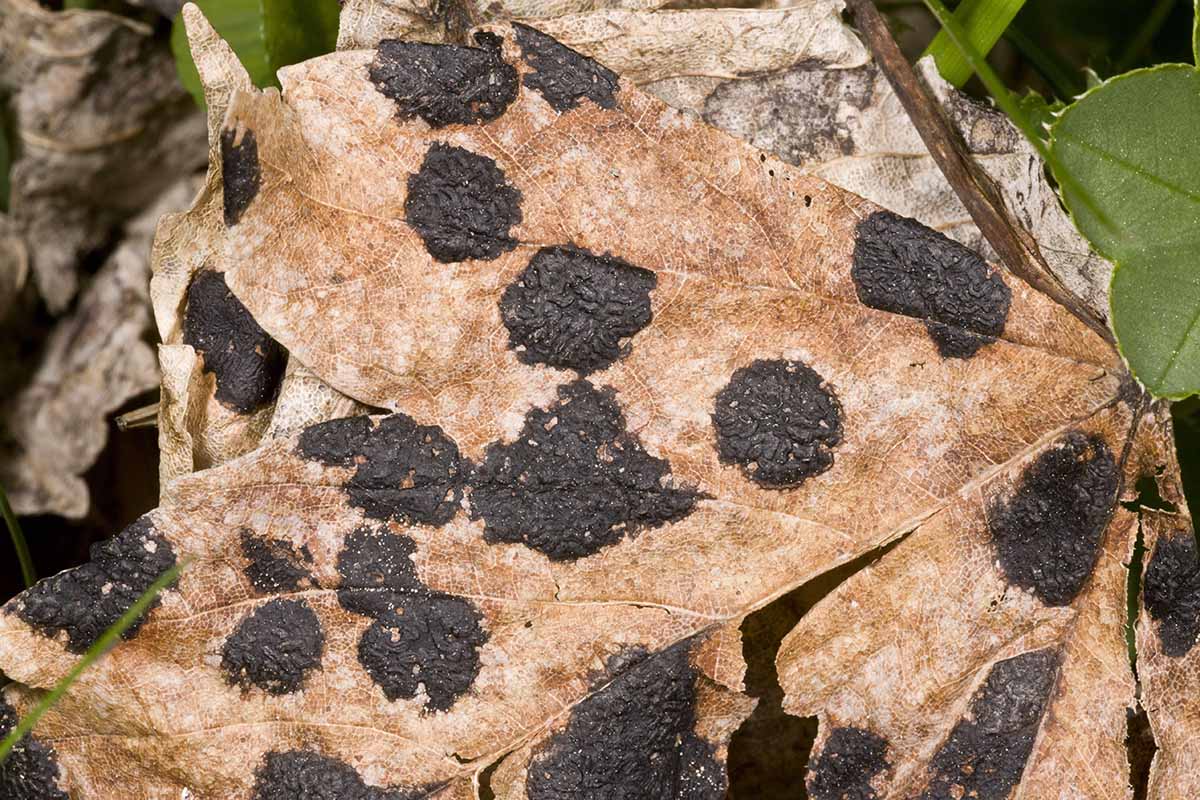
The disease often starts with small, pale yellow spots that are easy to miss. It’s not until summer arrives that the spots turn black and become more distinct.
This is another one of those diseases that sucks because the symptoms are ugly. But it doesn’t really harm the health of the tree.
Because the spores overwinter on fallen leaves, it’s imperative that you rake up all the fallen debris in the fall.
If you do, it’s unlikely that the disease will return the following year in any major way. There’s no need to treat with fungicides since this problem is mostly cosmetic and easy to control.
Out, Damned Spot!
We love Japanese maples for their leaves. This isn’t a plant that can hide behind showy flowers. Spots mar their elegance, and they’re also usually an indication that something is wrong.
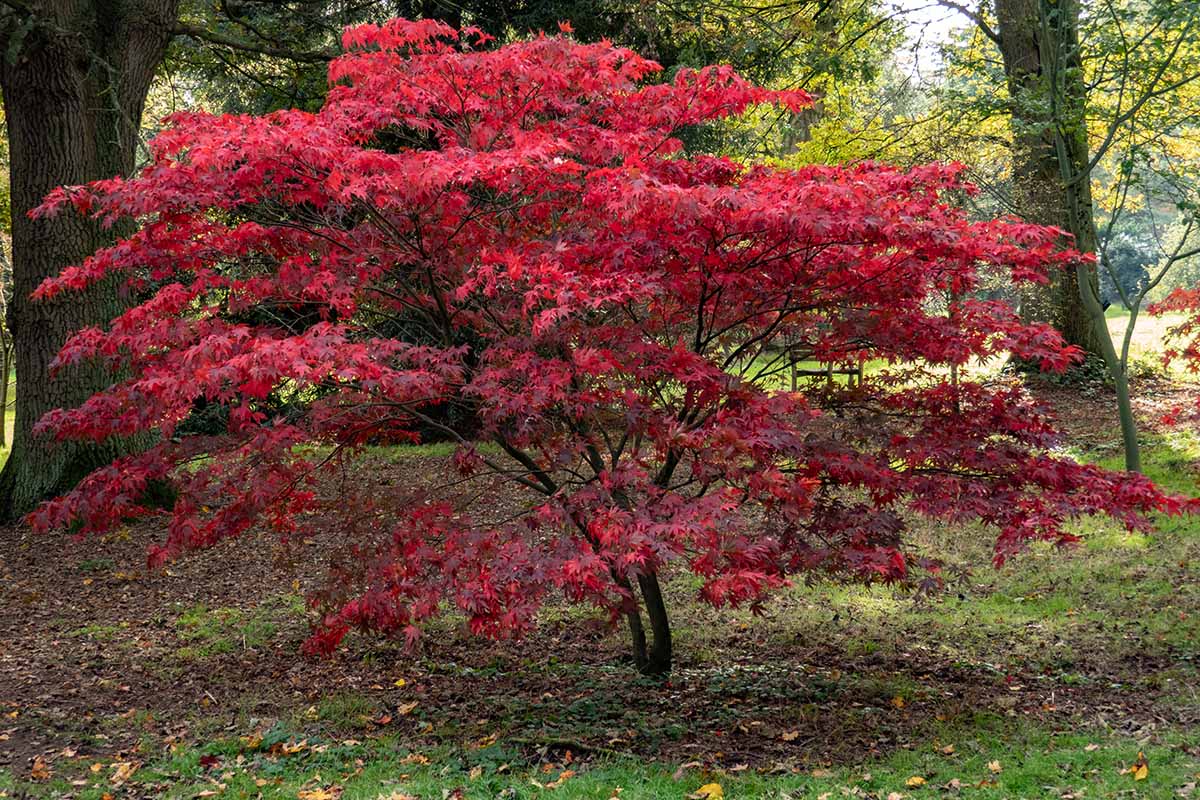
What symptoms are you seeing on your Japanese maples? Did this guide help you to resolve the problem? If you have any other questions, feel free to hit us up in the comments.
There’s so much more to the big, beautiful world of Japanese maples. Here are a few other guides that you might enjoy checking out next:
